Egyptian Mongoose
- February 8, 2024
- 0 comment
The Egyptian mongoose, scientifically known as Herpestes ichneumon, is a fascinating mammal that roams the landscapes of North Africa and the Middle East. With its sleek, slender body and keen intellect, this small carnivore has captured the curiosity of researchers and nature enthusiasts alike. Sporting fur ranging from sandy brown to reddish hues, the Egyptian mongoose blends seamlessly into its arid habitats, including deserts, woodlands, and agricultural areas. Despite its relatively small size, ranging from 40 to 60 centimeters in length excluding its tail, which can add an additional 30 to 45 centimeters, this resourceful hunter is known for its agility and versatility.
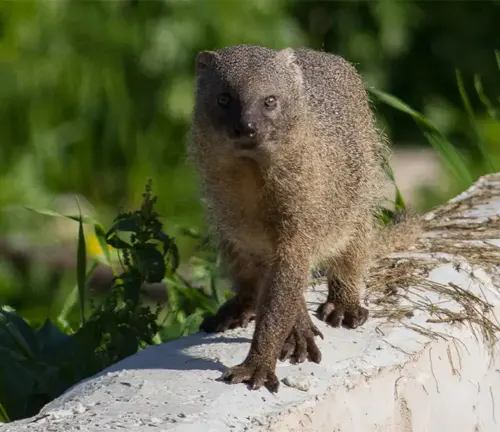
Preying on a diverse range of small vertebrates, insects, and even fruits, the Egyptian mongoose showcases its adaptability as an opportunistic predator. Its solitary nature, territorial behavior, and ritualized mating displays add layers to its intriguing behavior. Throughout history, the Egyptian mongoose has held cultural significance, depicted in ancient Egyptian art and mythology as a symbol of agility, fertility, and guardianship. While it faces threats from habitat loss and human-wildlife conflict, concerted conservation efforts aim to ensure the survival of this remarkable species for generations to come.
| Aspect | Description |
|---|---|
| Scientific Name | Herpestes ichneumon |
| Size | Typically 40 to 60 centimeters in length (excluding tail), with tails adding an extra 30 to 45 cm |
| Coloration | Fur ranges from sandy brown to reddish hues, with darker markings possible |
| Habitat | Found in arid regions of North Africa and the Middle East, including deserts, woodlands, and farms |
| Diet | Opportunistic predator, feeds on small vertebrates, insects, birds, eggs, and fruits |
| Behavior | Predominantly solitary, exhibits territorial behavior and ritualized mating displays |
| Cultural Significance | Featured in ancient Egyptian art and mythology as a symbol of agility, fertility, and guardianship |
| Conservation Status | Listed as Least Concern on the IUCN Red List, facing threats from habitat loss and human conflict |
A Closer Look at Nature’s Resourceful Hunter

The Egyptian mongoose, also known as Herpestes ichneumon, is a fascinating creature that prowls the landscapes of North Africa and the Middle East. With its sleek physique and keen intellect, this small carnivore has captured the curiosity of researchers and nature enthusiasts alike.
Physical Characteristics
Size and Appearance
The Egyptian mongoose typically measures between 40 to 60 centimeters in length, excluding its tail, which can add an additional 30 to 45 centimeters. It boasts a slender body, characterized by short legs and a long, tapering tail.
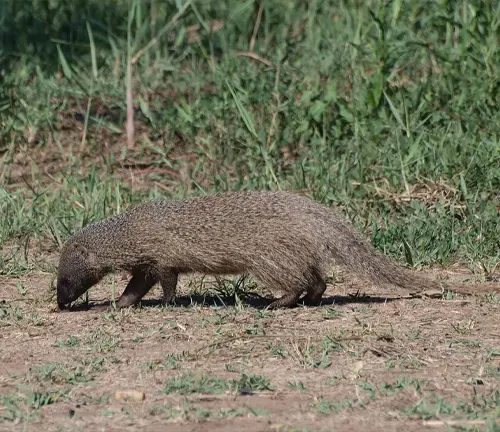

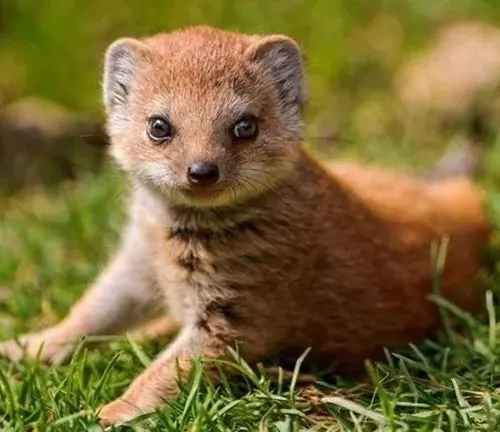
- Size: The Egyptian mongoose typically measures between 40 to 60 centimeters (approximately 16 to 24 inches) in length, excluding its tail. The tail itself can add an additional 30 to 45 centimeters (approximately 12 to 18 inches) to its total length.
- Body: It boasts a slender and agile body, characterized by short legs and a long, tapering tail. This physique enables it to move swiftly through various terrains and environments.
- Eyes: Egyptian mongooses have small, dark eyes positioned on the sides of their heads, providing them with a wide field of vision. This adaptation enhances their ability to detect movement and potential threats in their surroundings.
- Ears: Their ears are relatively small and rounded, with keen auditory senses that help them detect sounds such as the movements of prey or the presence of predators.
- Teeth and Claws: Equipped with sharp, pointed teeth and retractable claws, the Egyptian mongoose is well-adapted for hunting and self-defense. These specialized features enable it to efficiently capture and subdue prey while also warding off potential threats.
Fur and Coloration
Its fur varies in coloration, ranging from a sandy brown to a reddish hue, providing effective camouflage in its natural habitat. Some individuals may exhibit darker markings along their backs and tails.
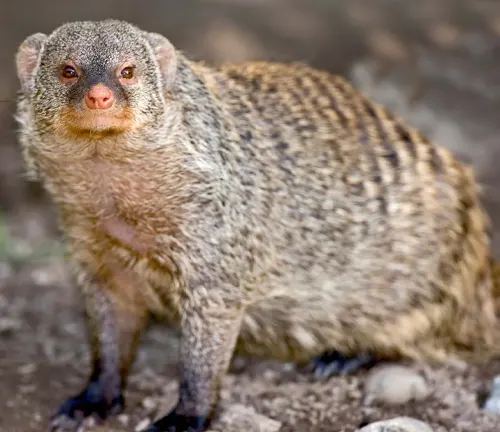
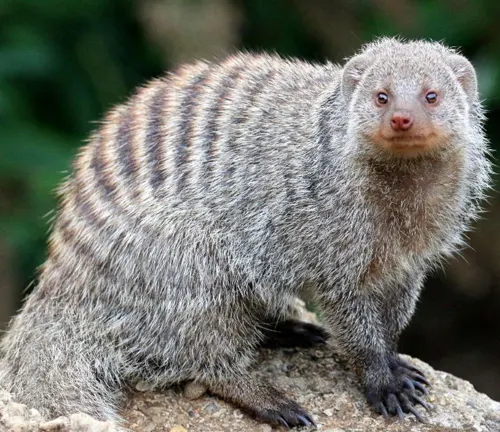
- Fur: The fur of the Egyptian mongoose varies in coloration, ranging from a sandy brown to reddish hues. Some individuals may exhibit darker markings along their backs and tails, providing effective camouflage in their natural habitats.
- Coat: Its coat is dense and sleek, aiding in insulation and protection from the elements. The fur is also water-resistant, allowing the mongoose to navigate through wet or damp environments without discomfort.
Habitat and Distribution
Geographic Range
The Egyptian mongoose, is primarily found in the arid regions of North Africa and the Middle East. Its geographic range spans across countries such as Egypt, Libya, Morocco, Algeria, Tunisia, and parts of the Arabian Peninsula. Within these regions, the mongoose inhabits diverse habitats, including deserts, woodlands, scrublands, and agricultural areas. It is particularly adaptable to human-altered landscapes, often venturing into urban environments in search of food and shelter. While its distribution is widespread within its range, the Egyptian mongoose prefers areas with suitable cover for hunting and denning, such as dense vegetation, rocky outcrops, and abandoned burrows.
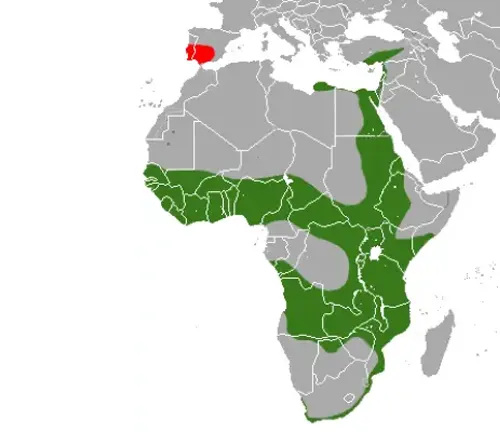
Preferred Habitats
The Egyptian mongoose, Herpestes ichneumon, exhibits a preference for diverse habitats within its geographic range in North Africa and the Middle East. While adaptable to various environments, it gravitates towards specific types of habitats that offer suitable conditions for foraging, shelter, and reproduction. Some of the preferred habitats of the Egyptian mongoose include:
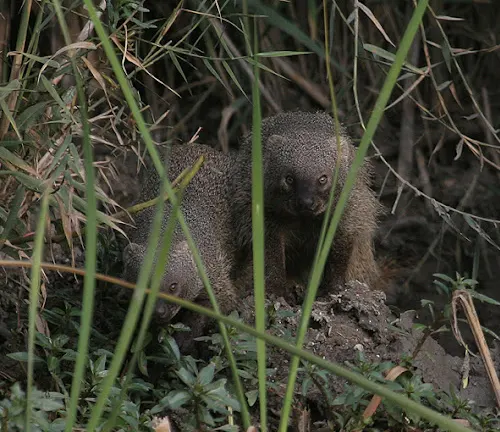
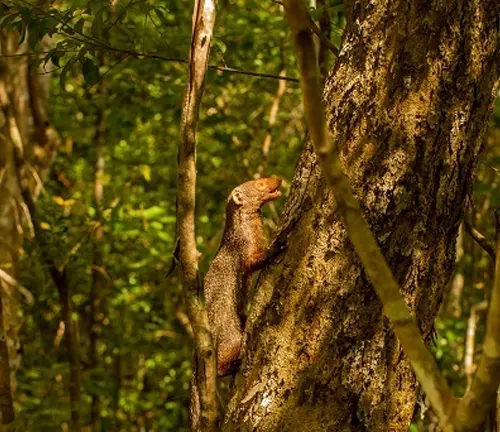

- Woodlands: Mongoose populations are often found in wooded areas, including forests, groves, and wooded savannahs. These habitats provide ample cover and vegetation for hunting prey, as well as suitable den sites for shelter and raising young.
- Grasslands: Open grasslands and savannahs are also favored by Egyptian mongooses, offering expansive areas for foraging and hunting small vertebrates such as rodents and insects. The sparse vegetation allows for easy movement and detection of prey.
- Agricultural Areas: Egyptian mongooses are known to inhabit agricultural landscapes, including farmlands, orchards, and vineyards. These areas provide a diverse array of food sources, including crops, fruits, and insects, making them attractive for opportunistic feeding.
- Scrublands: Scrublands, characterized by dense shrubbery and thicket vegetation, are frequented by Egyptian mongooses. These habitats offer abundant cover for hunting and nesting, as well as protection from predators.
- Urban Environments: Despite being primarily wild animals, Egyptian mongooses are adaptable to urban settings and may be found in suburban areas, parks, and gardens. They are known to exploit human-altered landscapes for food and shelter, including scavenging from trash bins and nesting in abandoned structures.
Diet and Feeding Habits
The Egyptian mongoose, Herpestes ichneumon, is an opportunistic predator with a varied diet that includes a wide range of prey items. Its feeding habits are adapted to exploit different food sources available in its habitat. Here’s an overview of the diet and feeding habits of the Egyptian mongoose:
Versatile Predator
The Egyptian mongoose is an opportunistic predator, capable of preying on a wide variety of animals ranging from small vertebrates like rodents and reptiles to insects and even fruits. This versatility in diet allows the mongoose to adapt to changing environmental conditions and ensures its survival in diverse habitats.
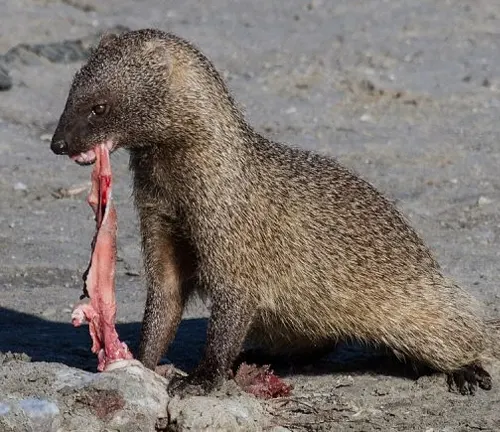
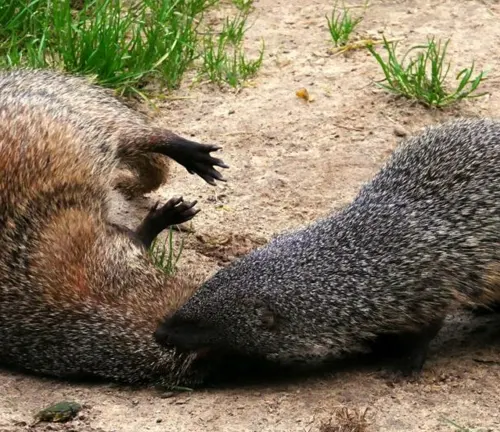
Crepuscular and Nocturnal Hunting
Egyptian mongooses are primarily crepuscular and nocturnal hunters, meaning they are most active during dawn, dusk, and nighttime. This hunting behavior enables them to take advantage of low-light conditions when many of their prey species are also active. By hunting during these periods, mongooses maximize their chances of encountering prey and minimizing the risk of predation from larger predators.
Efficient Foraging Techniques
When hunting, Egyptian mongooses employ a combination of stealth, agility, and keen senses to locate and capture prey. They utilize their sharp claws and teeth to immobilize and subdue prey quickly, often relying on ambush tactics and rapid movements to surprise their targets. Additionally, mongooses are known for their ability to adapt their foraging behavior to different environments, including both terrestrial and arboreal habitats, allowing them to exploit a wide range of microhabitats for food resources.
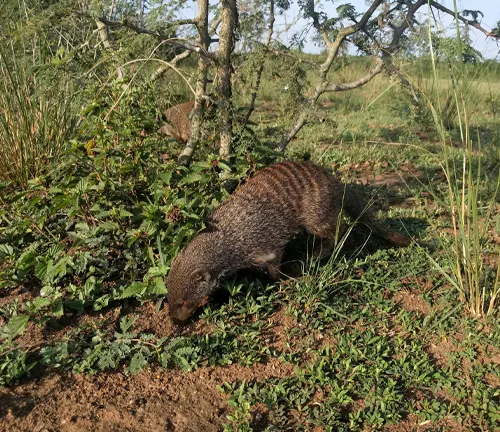
Behavior and Social Structure
The behavior and social structure of the Egyptian mongoose, Herpestes ichneumon, are fascinating aspects of its natural history. Here’s an overview:
Solitary Nature
Egyptian mongooses are predominantly solitary animals, with individuals typically foraging, hunting, and moving alone within their territories. They establish and defend territories against intruders, marking boundaries through scent marking and vocalizations.
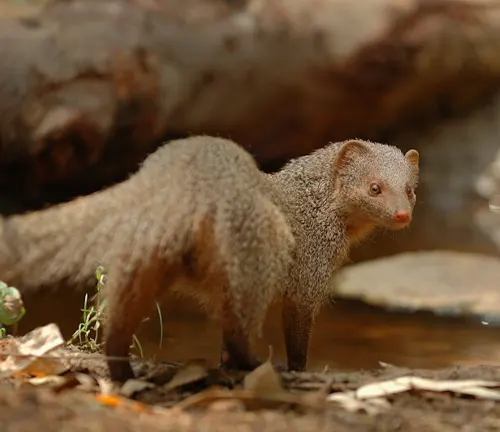
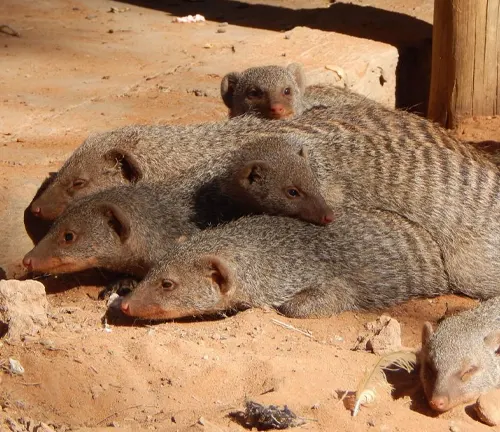
Territorial Behavior
Mongoose territories can vary in size depending on factors such as sex, age, and habitat quality. Males generally have larger home ranges than females, encompassing multiple female territories. Territories are defended against intruders, with territorial disputes often resolved through ritualized displays and occasional skirmishes.
Loose Associations
While primarily solitary, Egyptian mongooses may form loose associations with conspecifics, especially during the breeding season. Males and females may come together temporarily for mating purposes, after which they typically resume solitary behaviors.
Communication
Communication among Egyptian mongooses involves a variety of vocalizations, including chirps, growls, and alarm calls. These vocalizations are used to establish territory boundaries, communicate mating readiness, and warn of potential threats.
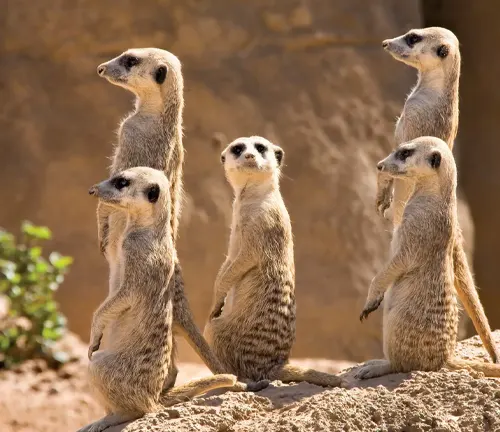
Parental Care
Female mongooses are responsible for caring for and raising their offspring, which are typically born in dens or burrows. The young are born blind and helpless, relying on maternal care for survival during the early stages of life. Mothers provide protection, warmth, and food until the young are old enough to fend for themselves.
Social Interactions
While solitary for much of their lives, Egyptian mongooses may engage in social interactions with other individuals, such as grooming, playing, or sharing communal resting sites. These interactions help maintain social bonds within the population and facilitate cooperative behaviors when necessary.
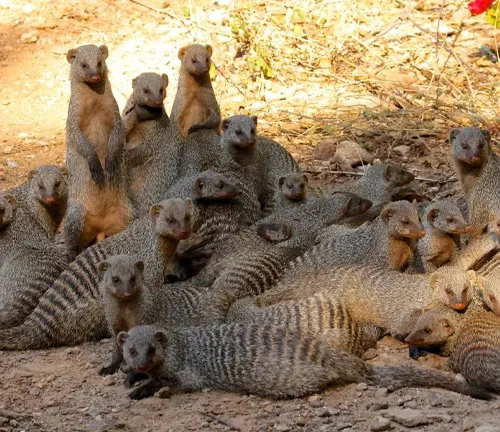
Reproduction and Life Cycle
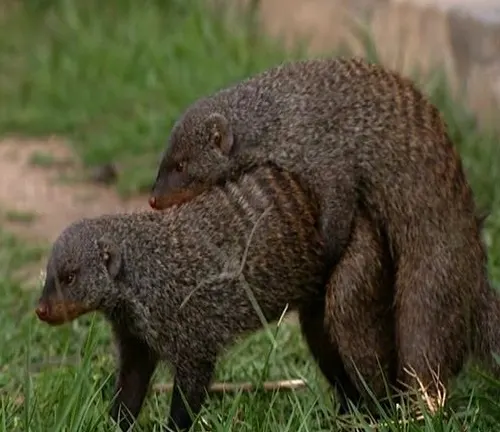
Mating Behavior
The mating behavior of Egyptian mongooses is characterized by a combination of territorial displays and courtship rituals. Males compete for access to females through displays of dominance and aggression, often engaging in ritualized fights or vocalizations to establish their dominance. Once a male successfully courts a female, mating occurs, typically during the warmer months of the year. Mating can be a brief but intense affair, after which the male and female may part ways until the next breeding season.
Gestation and Birth
After mating, female Egyptian mongooses undergo a gestation period of approximately 11 weeks, or around two to three months. Gestation typically occurs in dens or burrows, which provide protection and seclusion for the pregnant female. Once the gestation period is complete, the female gives birth to a litter of 2 to 4 pups on average, although litter sizes can vary. The newborn pups are born blind and helpless, relying entirely on maternal care for their survival. The mother provides warmth, protection, and nourishment through nursing until the pups are old enough to venture out of the den and begin exploring their surroundings. This period of maternal care is crucial for the pups’ development and growth, setting the foundation for their independence as they mature.
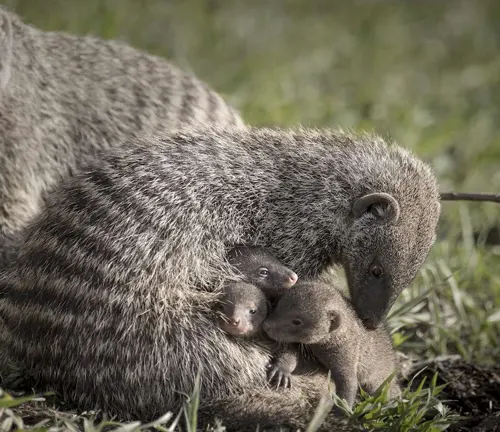
Predators and Threats
- Natural Predators
Egyptian mongooses are preyed upon by a variety of larger carnivores, including birds of prey such as eagles and hawks, snakes, and other mammals like jackals and foxes. Juvenile mongooses, in particular, are vulnerable to predation as they are smaller and less experienced in evading predators. - Human Threats
Perhaps the most significant threats to Egyptian mongooses come from human activities. Habitat loss and fragmentation due to urbanization, agriculture, and infrastructure development encroach upon their natural habitats, reducing available food sources and nesting sites. Additionally, road accidents pose a significant risk to mongooses, especially in areas where roads intersect their territories. - Persecution by Farmers
In agricultural areas, Egyptian mongooses may come into conflict with farmers due to perceived threats to poultry and crops. Farmers may actively persecute mongooses through trapping, poisoning, or shooting in an attempt to protect their livelihoods. This human-wildlife conflict can result in significant declines in local mongoose populations and disrupt ecosystem dynamics. - Disease and Parasites
Like all wildlife, Egyptian mongooses are susceptible to diseases and parasites that can affect their health and survival. Infectious diseases transmitted by other animals, as well as parasites such as ticks and fleas, can weaken mongoose populations and increase mortality rates, particularly in areas with high population densities. - Climate Change
Climate change poses indirect threats to Egyptian mongooses by altering habitat conditions, affecting prey availability, and increasing the frequency and intensity of extreme weather events. Changes in temperature, precipitation patterns, and habitat suitability can disrupt mongoose populations and force them to adapt to new environmental conditions.
Different Species
Narrow-striped mongoose
(Mungotictis decemlineata)
Found in Madagascar, this mongoose species is known for its distinctive narrow stripes along its body and tail. It inhabits various habitats, including forests, savannas, and scrublands.

Banded mongoose
(Mungos mungo)
Native to sub-Saharan Africa, the banded mongoose is known for its social behavior, living in large family groups called troops. They are often found in grasslands, woodlands, and scrublands, where they feed on insects, small vertebrates, and fruits.
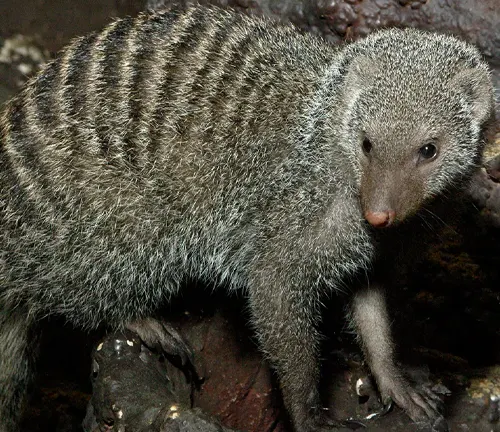
Dwarf mongoose
(Helogale parvula)
Found in eastern and southern Africa, the dwarf mongoose is the smallest mongoose species. It lives in cohesive family groups and feeds primarily on insects, though it may also consume small reptiles, birds, and fruits.

White-tailed Mongoose
(Ichneumia albicauda)
Native to sub-Saharan Africa, the white-tailed mongoose is named for the distinctive white tip on its tail. It is primarily nocturnal and solitary, inhabiting a variety of habitats, including grasslands, forests, and scrublands.
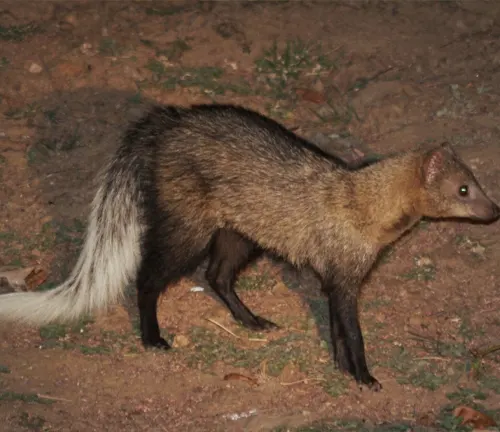
Yellow Mongoose
(Cynictis penicillata)
Found in southern Africa, the yellow mongoose is known for its yellowish-brown fur and distinctive black-tipped tail. It lives in burrow systems and feeds primarily on insects but may also consume small vertebrates and fruits.
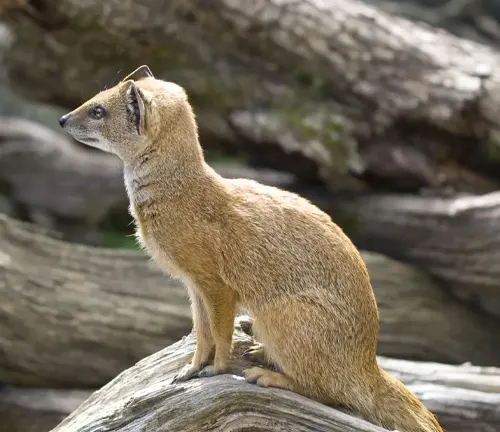
Frequently Asked Question (FAQs)
- What does the Egyptian mongoose look like?
The Egyptian mongoose has a sleek, slender body with short legs and a long, tapering tail. Its fur varies in color from sandy brown to reddish hues, often with darker markings along its back and tail. - Where do Egyptian mongooses live?
Egyptian mongooses are primarily found in the arid regions of North Africa and the Middle East, including countries such as Egypt, Libya, Morocco, and parts of the Arabian Peninsula. - What do Egyptian mongooses eat?
Egyptian mongooses are opportunistic predators that feed on a variety of small vertebrates, insects, birds, eggs, and fruits. Their diet varies depending on prey availability and habitat. - Are Egyptian mongooses nocturnal?
Egyptian mongooses are primarily crepuscular or nocturnal, meaning they are most active during dawn, dusk, and nighttime. However, they may also hunt during the day, especially in cooler weather or when food availability is high. - Do Egyptian mongooses live in groups?
Egyptian mongooses are predominantly solitary animals, with individuals typically foraging and moving alone within their territories. However, they may form loose associations with conspecifics, especially during the breeding season. - How long do Egyptian mongooses live?
The lifespan of Egyptian mongooses in the wild is typically around 6 to 8 years, although they may live longer in captivity with proper care and management. - Do Egyptian mongooses hibernate?
No, Egyptian mongooses do not hibernate. They are active year-round, foraging for food and maintaining their territories throughout all seasons. - What are the main threats to Egyptian mongooses?
The main threats to Egyptian mongooses include habitat loss and fragmentation, human-wildlife conflict, road accidents, predation by larger carnivores, and disease outbreaks. - Are Egyptian mongooses protected by law?
In some countries, Egyptian mongooses may be protected by wildlife conservation laws that regulate their hunting, trapping, and trade. However, enforcement of these laws can vary, and mongooses may still face threats from illegal activities. - Can Egyptian mongooses swim?
While Egyptian mongooses are primarily terrestrial animals, they are capable swimmers and may enter water bodies such as rivers, streams, and ponds to hunt for prey or escape predators. - Do Egyptian mongooses have any natural predators?
Yes, Egyptian mongooses face predation from larger carnivores such as birds of prey, snakes, and other mammals, especially when they are young and vulnerable.




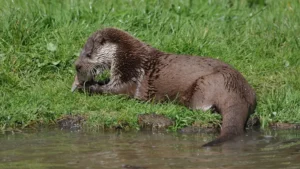

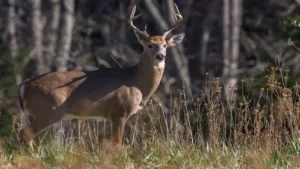
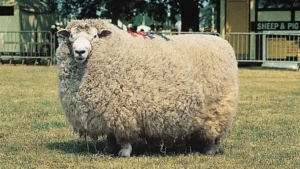
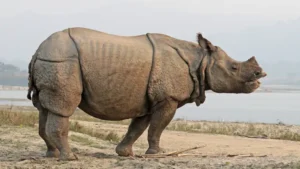


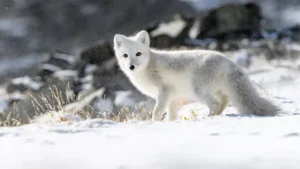


Leave your comment